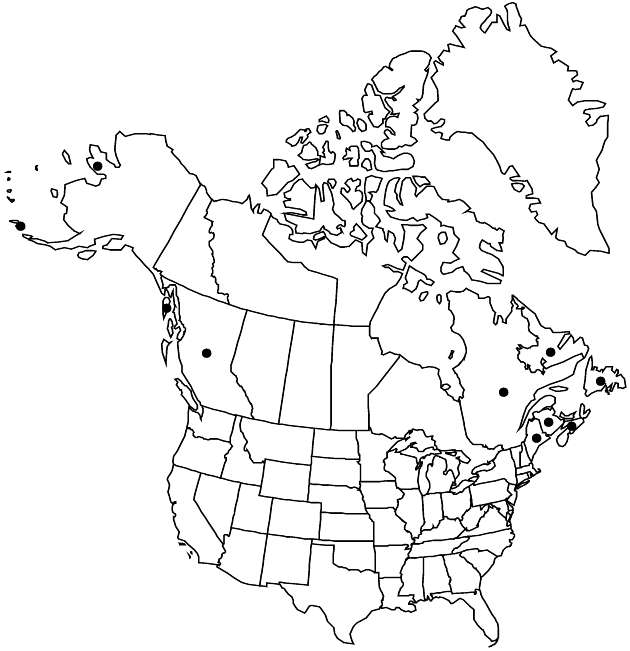Senecio pseudoarnica
Linnaea 6: 240. 1831.
Perennials, (15–)20–60(–100) cm (caudices erect). Herbage arachno-tomentose to sericeous-lanate (especially on abaxial faces of phyllaries), unevenly glabrescent. Stems single (turgid). Leaves evenly distributed (proximal withering before flowering); subsessile or petiolate; blades obovate to oblanceolate, 5–15(–25) × 2–6(–10) cm, bases tapered, margins serrate-dentate to denticulate or subentire (distal leaves slightly smaller). Heads 1–5(–15+) in corymbiform arrays (involucres notably large, 20–40 mm diam.). Calyculi of 6–10 linear bractlets (longest nearly equaling phyllaries). Phyllaries ± 21, 8–15 mm (sometimes purplish or pinkish-tinged), tips greenish. Ray florets usually ± 21, rarely 0; corolla laminae 20–25 mm. Cypselae glabrous. 2n = 40.
Phenology: Flowering summer.
Habitat: Sandy-gravelly ocean shores and upper beaches
Elevation: 0 m
Distribution

St. Pierre and Miquelon, B.C., N.B., Nfld. and Labr., N.S., Que., Alaska, Maine, ne Asia.
Discussion
Rayless individuals of Senecio pseudoarnica have been recognized as var. rollandii or forma rollandii (Victorin) Fernald; they are not otherwise distinctive.
Selected References
None.
